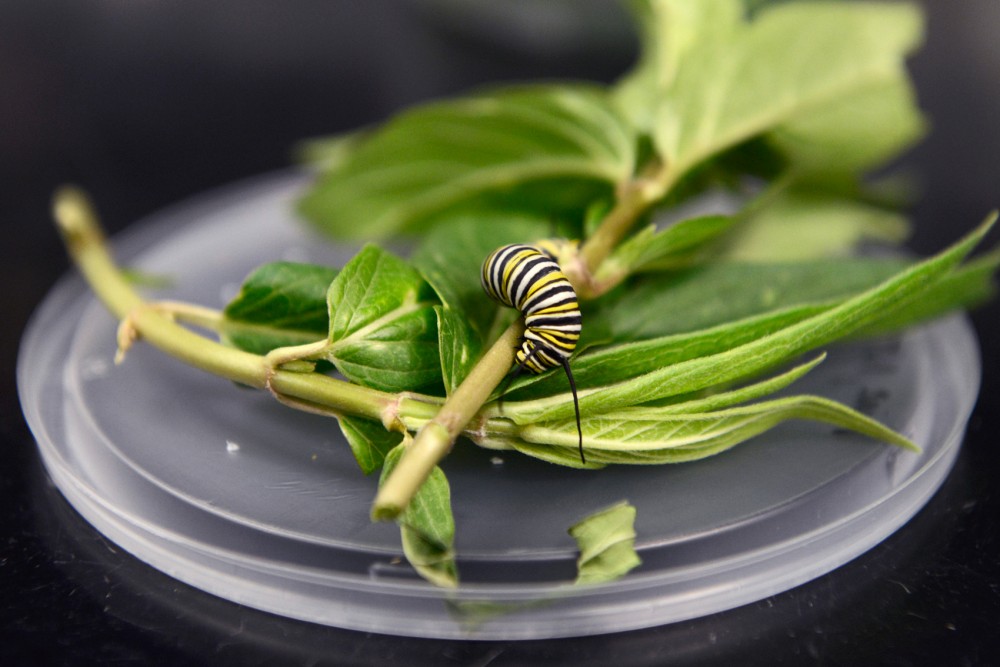Scientists are one step closer to figuring out the mystery of monarch butterfly migration patterns.
To navigate their 2,400-mile trek from the northern United States and Canada to central Mexico, monarchs take cues from the sun, according to a study published this month in the journal Cell Reports.
The research team of biologists and mathematicians developed a neurocircuit to understand the butterflies’ circadian clock — the oscillating system that allows them to sense environmental changes according to the time of day.
Butterflies take migration cues from their retinas which respond to light throughout the day, said University of Massachusetts Medical School neurobiologist and study author Steven Reppert.
Monarchs rely on the sun as a compass and its horizontal movements as a navigation mechanism, Reppert said.
“From the biologists’ standing point, what’s exciting is we [are now trying] to actually define the neurocircuits in the brain that provide these parameters that were modeled,” he said.
Using the signals that butterflies are supposed to respond to, researchers designed a model based on differential equations to determine how many spikes the butterflies’ neurons have in a second, said Eli Shlizerman, University of Washington assistant professor of applied mathematics and electrical engineering and study
author.
If the butterflies fly in the right direction, their neurons are idle, he said. If there is a shift in the sun’s direction, they indicate which direction to turn, he said.
The migration cycle is short, and monarchs only make the pilgrimage from Canada to Mexico every three generations, Shlizerman said.
The way monarchs navigate has been a mystery until now, said fisheries, wildlife and conservation biology professor and head of the University’s Monarch Lab Karen Oberhauser.
“They’re doing really groundbreaking work on how monarchs can sense direction,” Oberhauser said.
Monarch migration is closely connected to conservation, she said. In order to protect monarchs, she said, people need to take steps to conserve their breeding and migrating habitats.
“Anything we learn about the basic biology of the monarch migration — particularly the navigational capabilities — will better inform us in terms of making more rational conservation efforts for the monarch butterfly,” Reppert said.


